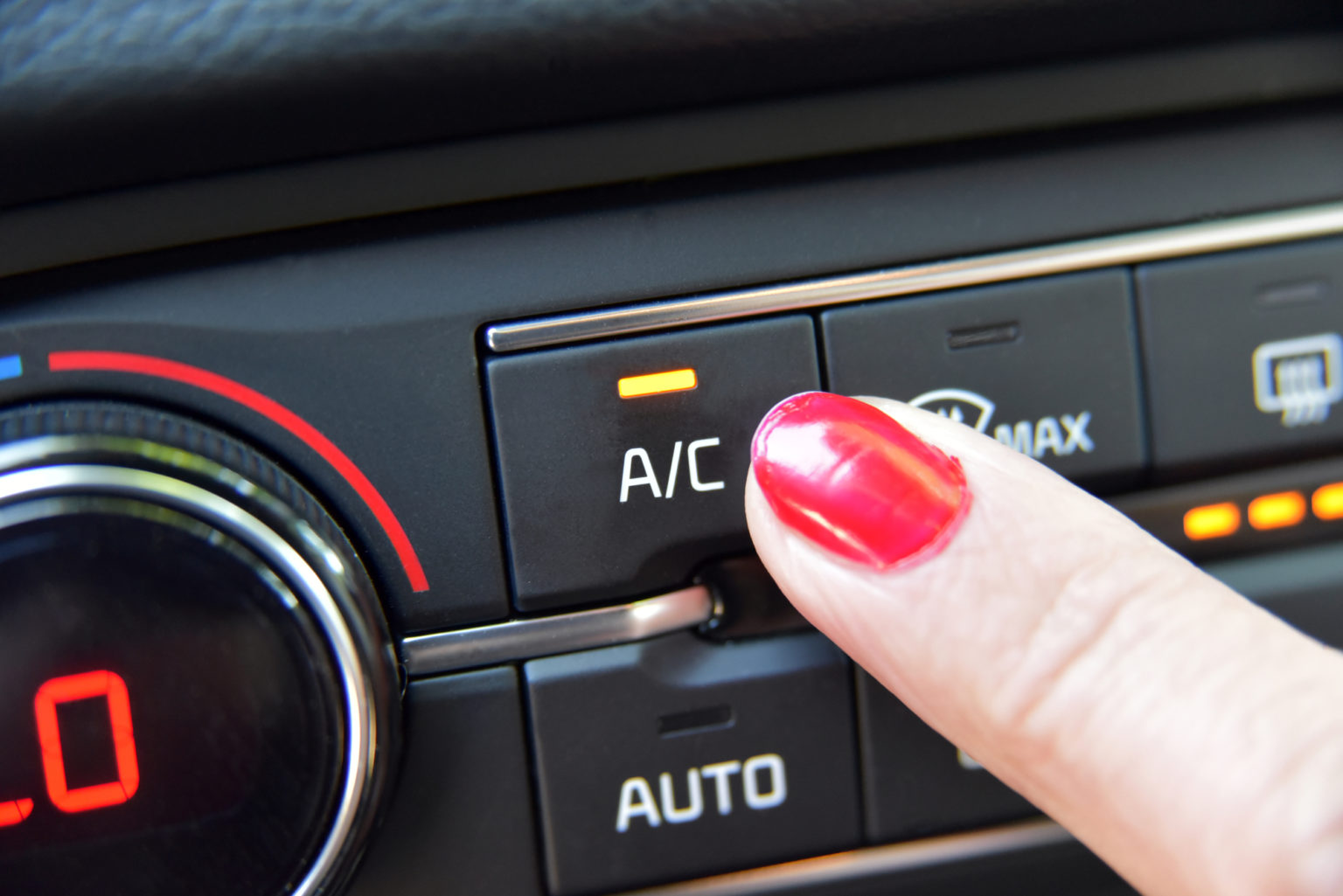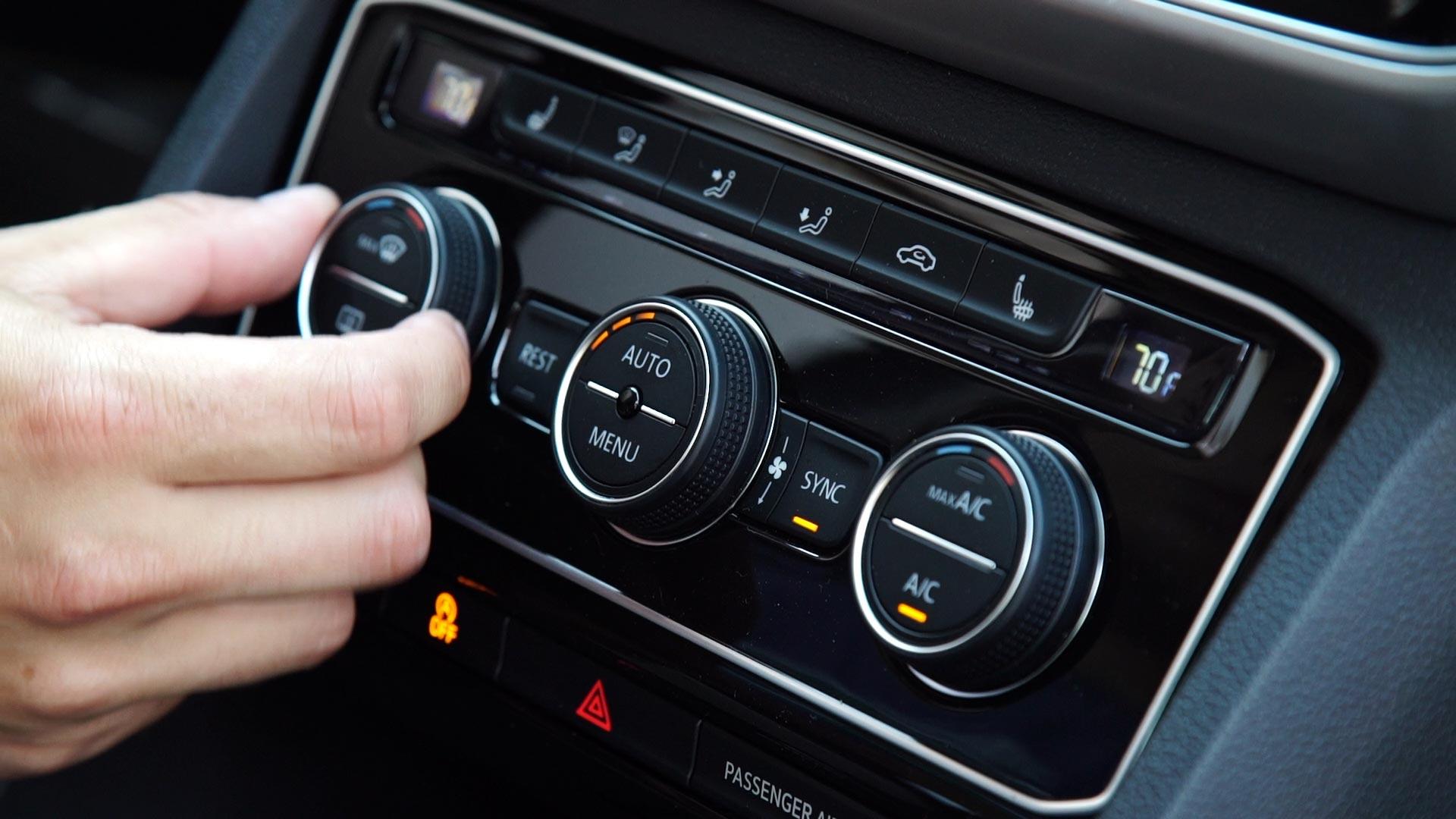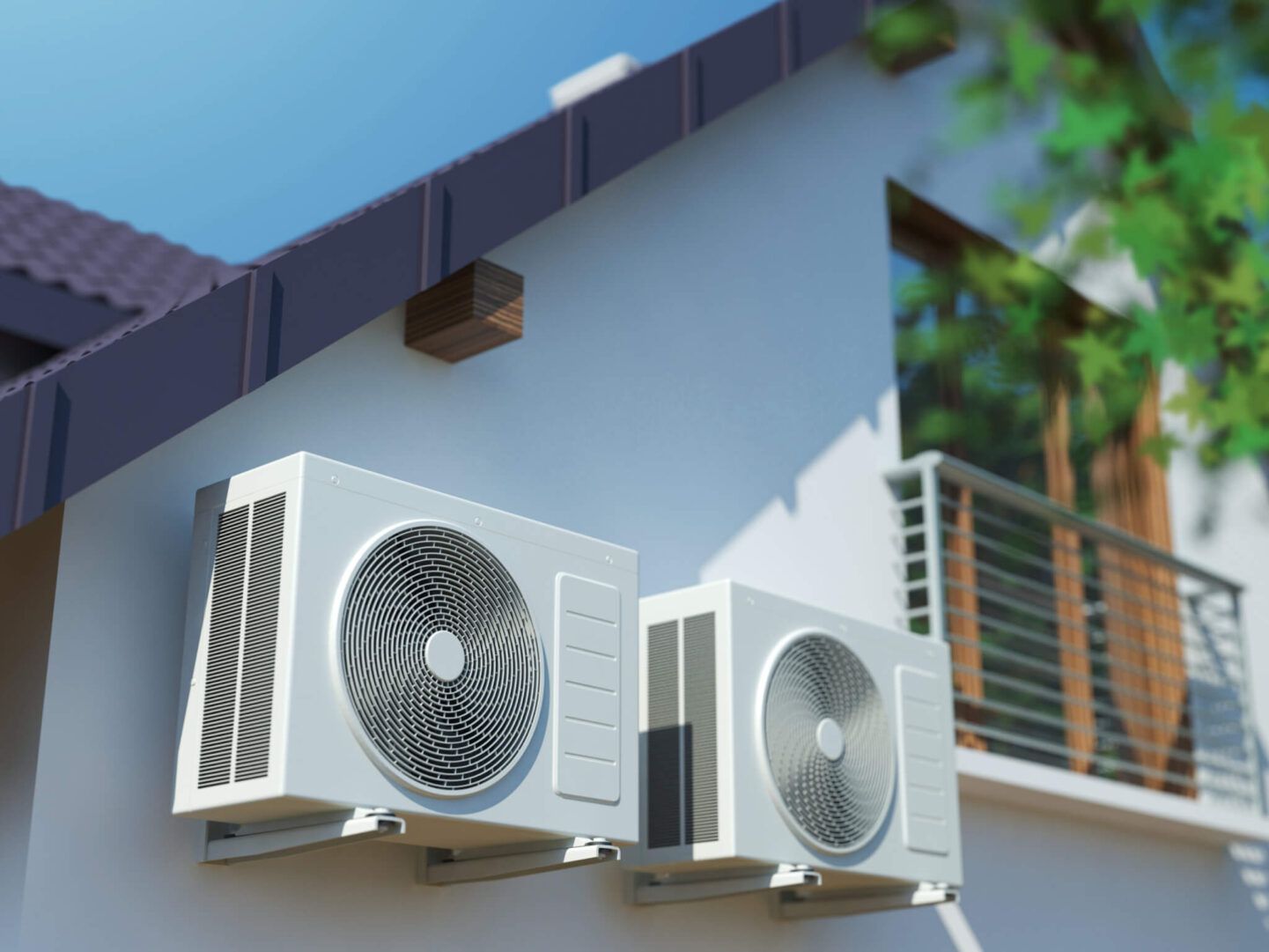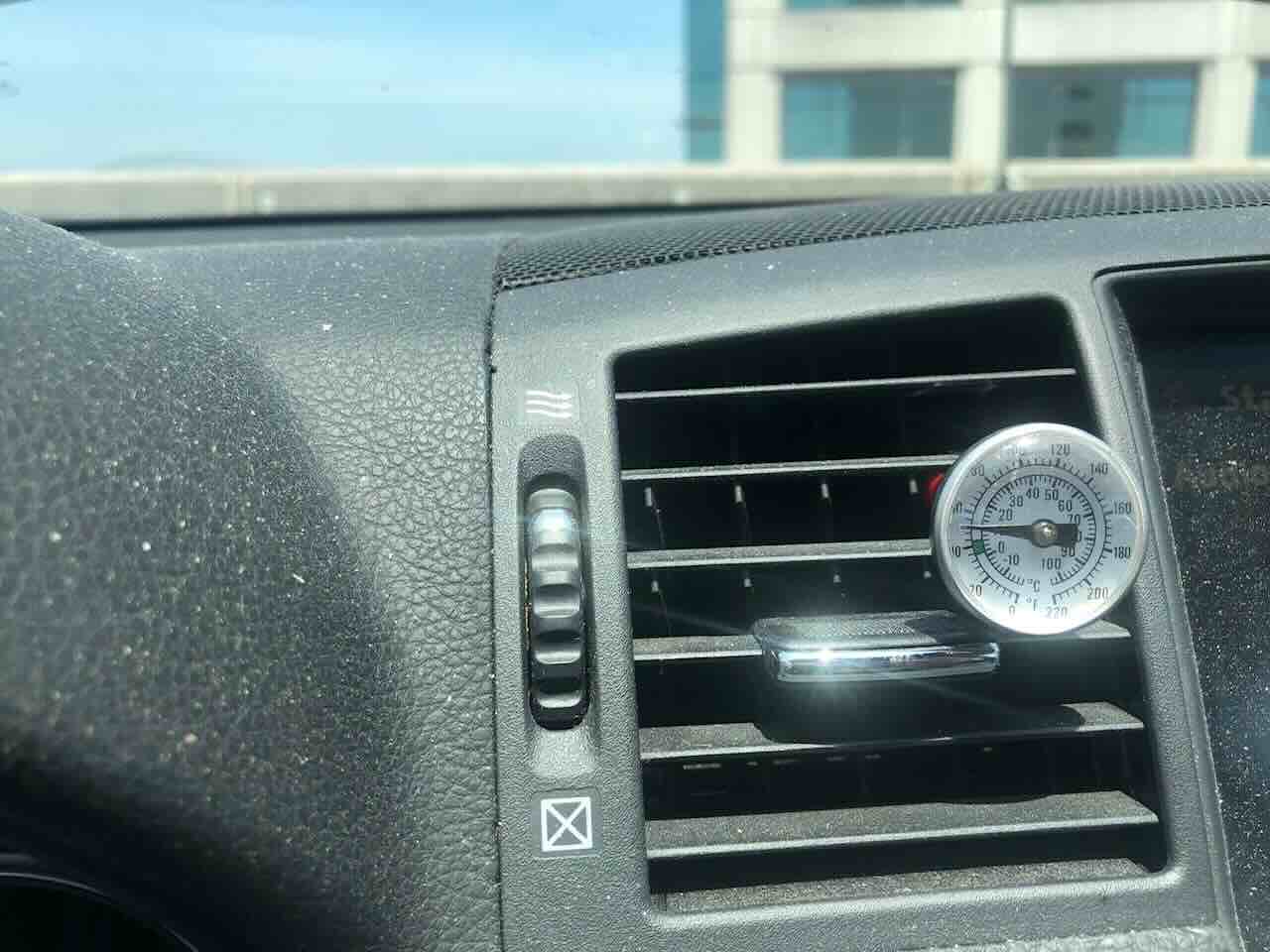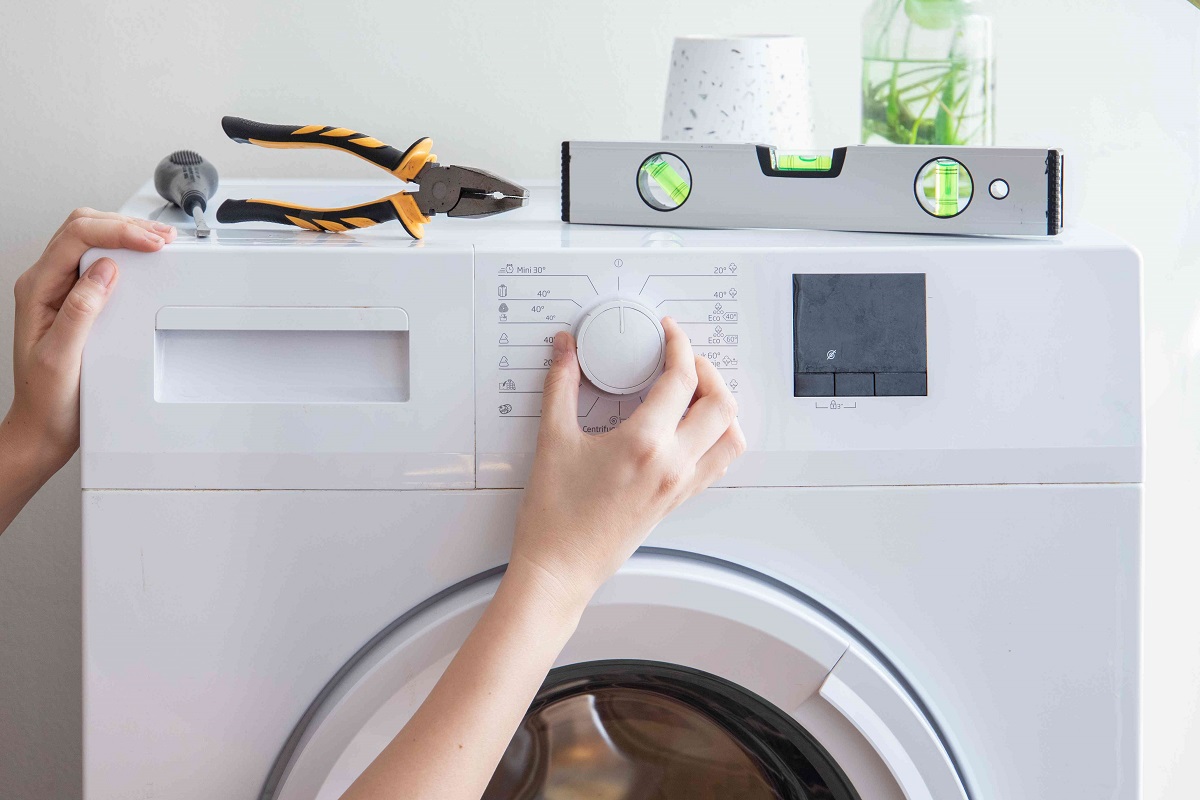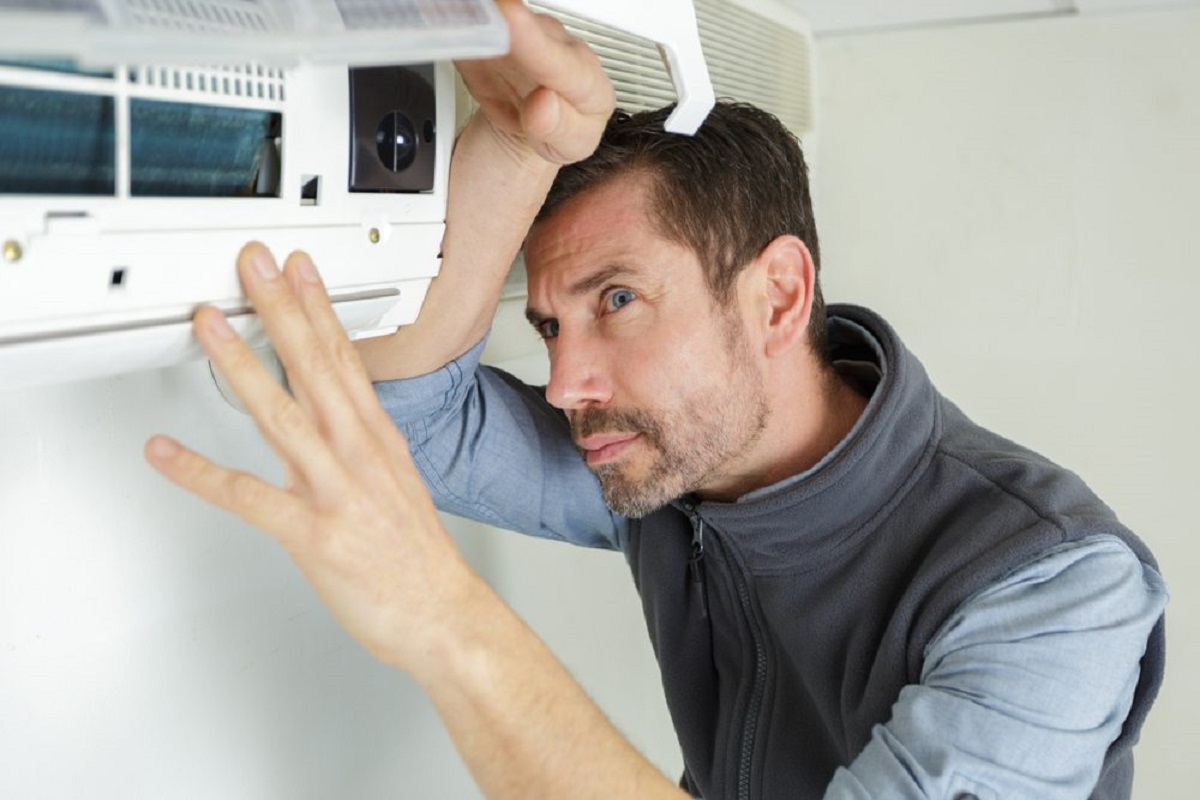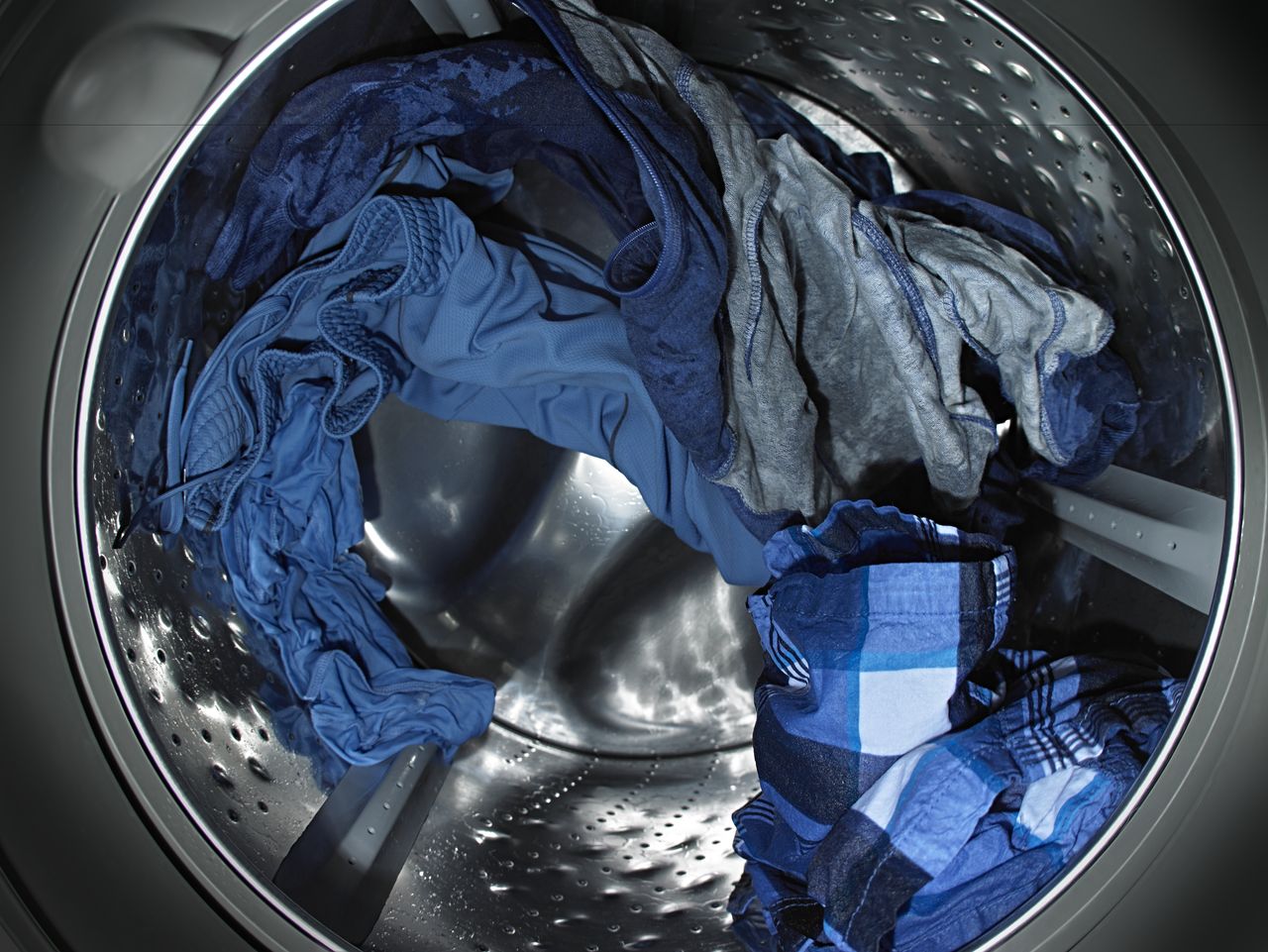Home>Home Maintenance>Car Makes Noise When Air Conditioner Is On


Home Maintenance
Car Makes Noise When Air Conditioner Is On
Modified: March 7, 2024
Experience home maintenance tips and solutions for the irritating problem of your car making noise when the air conditioner is turned on.
(Many of the links in this article redirect to a specific reviewed product. Your purchase of these products through affiliate links helps to generate commission for Storables.com, at no extra cost. Learn more)
Introduction
When you turn on your car’s air conditioner, the last thing you want to hear is a strange noise. However, if you’ve noticed that your car makes noise when the air conditioner is on, it’s important to address this issue as it could be a sign of an underlying problem. Ignoring these noises can lead to further damage and potentially costly repairs. In this article, we will explore the possible causes of the noise and provide you with solutions to diagnose and fix the issue.
Various factors can contribute to noise when the air conditioner is running. It could be related to the fan belt, A/C compressor, air filter, serpentine belt, blower motor, refrigerant leak, pressure switch, or worn-out bearings. Let’s take a closer look at each of these potential causes and see how they can affect your car’s air conditioning system.
Key Takeaways:
- Don’t ignore strange car A/C noises! They could signal issues like loose belts, faulty compressors, or dirty filters. Regular maintenance and prompt repairs can keep your A/C running smoothly and quietly.
- Keep your car A/C cool and quiet! Check for refrigerant leaks, worn-out bearings, and faulty pressure switches. Addressing these issues promptly can ensure a comfortable and efficient driving experience.
Possible Causes of Noise When Air Conditioner Is On
1. Loose or Damaged Fan Belt: One common cause of noise when the air conditioner is running is a loose or damaged fan belt. Over time, the belt can wear out or become too loose, causing it to slip or make a squealing sound. This can be due to improper tension or a worn-out belt that needs to be replaced.
2. Faulty A/C Compressor: The A/C compressor is responsible for compressing and circulating the refrigerant in the system. If it becomes faulty or starts to malfunction, it can make unusual noises such as grinding, rattling, or clicking sounds. This could be a sign of internal damage or a failing clutch.
3. Blocked or Dirty Air Filter: An air filter prevents dust, debris, and contaminants from entering the A/C system. If it becomes clogged with dirt or debris, it can restrict airflow, causing the blower motor to work harder and make noise. Regularly cleaning or replacing the air filter can help prevent this issue.
4. Loose or Damaged Serpentine Belt: In some cars, the serpentine belt drives not only the engine but also the A/C compressor. If the belt is loose, worn, or damaged, it can cause noise when the air conditioner is running. Checking the tension and condition of the serpentine belt is important to ensure smooth operation.
5. Faulty Blower Motor: The blower motor is responsible for moving the air into the cabin of the car. If the motor or its bearings are damaged, it can produce a squeaking or grinding noise when the air conditioner is in use. Replacing the blower motor may be necessary to eliminate the noise.
6. Refrigerant Leak: A refrigerant leak in the A/C system can lead to insufficient cooling and cause the compressor to work harder. This increased strain on the compressor can result in strange noises like hissing or gurgling. Detecting and repairing any refrigerant leaks is crucial for the proper functioning of the air conditioning system.
7. Faulty Pressure Switch: The pressure switch monitors the pressure levels in the A/C system. If it malfunctions or is faulty, it can cause the air conditioner to make noise. This could be due to an incorrect reading or improper cycling of the compressor. Proper diagnosis and replacement of the pressure switch may be necessary.
8. Worn Out Bearings in the A/C System: Over time, the bearings in the A/C system can wear out, leading to noise when the air conditioner is on. The grinding or squealing sounds may indicate that the bearings need to be replaced to ensure smooth and quiet operation of the system.
Understanding these possible causes of noise when the air conditioner is running is crucial to identifying and resolving the issue. In the next section, we will discuss how to diagnose and fix the problem.
Loose or Damaged Fan Belt
A common cause of noise when the air conditioner is on is a loose or damaged fan belt. The fan belt, also known as the serpentine belt, plays a crucial role in powering various components of your car, including the air conditioning system.
Over time, the fan belt can become loose due to wear and tear or improper tension. When the belt is loose, it can slip or make a squealing sound, especially when the air conditioner is running. This noise is caused by the belt not effectively gripping the pulleys, which can lead to inefficient operation of the system.
To diagnose if the noise is indeed caused by a loose or damaged fan belt, start by opening the hood of your car and visually inspecting the belt. Look for any signs of fraying, cracks, or excessive wear. Additionally, check the tension of the belt by pressing down on it. A properly tensioned belt should have around ½ to ¾ inch of deflection.
If you notice any signs of damage or the belt is too loose, it is essential to address the issue promptly. Here’s how you can tighten or replace the fan belt:
- Locate the belt tensioner pulley, which is usually located near the engine. Use a wrench or a socket and ratchet to turn the tensioner in the direction that releases tension on the belt.
- Once the tension is released, carefully remove the old belt from the pulleys, taking note of its routing.
- If you are tightening the existing belt, use the tensioner to apply tension back to the belt until it reaches the proper deflection. Be sure to consult your car’s manual or a professional for the correct tension specifications.
- If the belt is damaged or excessively worn, it is recommended to replace it with a new one. Ensure that you purchase the correct size and type of belt for your specific car model.
- Carefully route the new belt onto the pulleys, referring to the belt routing diagram under the hood or in the car’s manual.
- Finally, use the tensioner pulley to apply the appropriate tension to the new belt. Again, consult your car’s manual or seek professional advice for the correct tension specifications.
It is worth noting that if you are not confident in performing these steps yourself, it is best to seek the assistance of a qualified mechanic. They will have the expertise and proper tools to safely tighten or replace the fan belt, ensuring optimal functioning of the air conditioning system and reducing the noise.
By addressing a loose or damaged fan belt promptly, you can eliminate the noise and prevent further damage to other components of your car’s air conditioning system. Remember to regularly inspect the belt for signs of wear and have it replaced as necessary to maintain smooth and quiet operation.
Faulty A/C Compressor
The A/C compressor is an essential component of your car’s air conditioning system. It is responsible for compressing and circulating the refrigerant, allowing the system to cool the air before it is distributed into the cabin. However, a faulty A/C compressor can contribute to noise when the air conditioner is on.
When the A/C compressor is failing or malfunctioning, it can produce various unusual noises. Some common noises associated with a faulty compressor include grinding, rattling, or clicking sounds. These noises can indicate internal damage or a failing clutch, which can affect the compressor’s ability to function properly.
To diagnose a faulty A/C compressor as the source of the noise, you can follow these steps:
- Start your car and turn on the air conditioner.
- Listen carefully for any unusual sounds coming from the front of the engine or the A/C compressor area.
- If you hear grinding, rattling, or clicking noises, it is likely that the A/C compressor is faulty.
- Observe if the compressor engages and disengages frequently or if it fails to engage at all.
- Feel the A/C lines near the compressor for excessive vibration or heat, as these can be signs of a malfunctioning compressor.
If you suspect a faulty A/C compressor, it is recommended to bring your vehicle to a professional mechanic for further inspection and diagnosis. They will have the proper tools and expertise to accurately assess the condition of the compressor and determine the necessary repairs.
Depending on the extent of the damage, repairing a faulty A/C compressor can involve replacing internal components or the entire compressor unit. In some cases, it may be more cost-effective to replace the compressor entirely. A qualified mechanic will be able to provide you with the best course of action based on the specific situation.
Keep in mind that addressing a faulty A/C compressor is crucial not only for eliminating the noise but also for maintaining the overall functionality of your car’s air conditioning system. A failing compressor can result in reduced cooling performance or even complete system failure. By addressing the issue promptly, you can ensure a comfortable and pleasant driving experience, especially during hot summer months.
Blocked or Dirty Air Filter
An often overlooked but significant factor that can contribute to noise when the air conditioner is on is a blocked or dirty air filter. The air filter is an essential component of the air conditioning system as it prevents dust, debris, and contaminants from entering the system and compromising its performance.
Over time, the air filter can accumulate dirt, dust, and other particles, which can restrict the airflow into the system. When the airflow is restricted, the blower motor has to work harder to push the air through, leading to increased noise levels. Additionally, a clogged air filter can also affect the overall efficiency of the air conditioning system, resulting in reduced cooling performance.
To diagnose if the noise is caused by a blocked or dirty air filter, you can follow these steps:
- Locate the air filter housing, which is typically found near the front of the engine compartment.
- Remove the housing cover or clips to access the air filter.
- Inspect the air filter visually. If it appears dirty, clogged, or covered in debris, it is likely the cause of the noise.
If you determine that the air filter is indeed blocked or dirty, it is essential to clean or replace it to restore proper airflow and reduce the noise. Here’s how you can address a blocked or dirty air filter:
- If the air filter is washable and reusable, carefully remove it and clean it using compressed air or by rinsing it with water. Allow it to dry completely before reinstalling it.
- If the air filter is not washable or heavily clogged, it is recommended to replace it with a new one. Consult your vehicle’s manual or a professional to ensure you purchase the correct type and size of air filter for your specific car model.
- Install the clean or new air filter into the housing, ensuring it is properly seated and secured.
- Reattach the housing cover or clips, making sure they are securely fastened.
Regularly inspecting and maintaining the air filter is essential for the efficient operation of your car’s air conditioning system. It is advisable to check and clean or replace the air filter at least once a year or as recommended by the manufacturer.
By addressing a blocked or dirty air filter, you can improve the airflow, maintain optimal cooling performance, and reduce noise levels. Additionally, a clean air filter can contribute to better air quality inside the cabin, ensuring a comfortable and healthy environment for you and your passengers.
Loose or Damaged Serpentine Belt
Another potential cause of noise when the air conditioner is on is a loose or damaged serpentine belt. In some cars, the serpentine belt drives not only the engine but also the air conditioning compressor.
Over time, the serpentine belt can become loose, worn, or damaged due to regular use and age. When the serpentine belt is not properly tensioned or is worn out, it can slip or make noise when the air conditioner is running. This noise is typically characterized by a squealing sound and can occur when the belt slips on the pulleys.
To determine if the noise is caused by a loose or damaged serpentine belt, you can follow these steps:
- Start your car and turn on the air conditioner.
- Listen carefully for any high-pitched squealing or chirping noises coming from the engine area while the air conditioner is running.
- If you hear such noises that correspond to the operation of the air conditioner, it is likely that the serpentine belt is loose or damaged.
- Visually inspect the serpentine belt for signs of wear, fraying, or cracking. A damaged belt needs to be replaced, while a loose belt requires proper tensioning.
If you determine that the serpentine belt is loose, you can follow these steps to tighten it:
- Locate the belt tensioner, which is responsible for adjusting the tension of the serpentine belt. Refer to your vehicle’s manual to locate the tensioner if needed.
- Using a wrench or a socket and ratchet, turn the tensioner in the direction that releases tension on the belt.
- Once the tension is released, carefully tighten the serpentine belt by either adjusting the tensioner or manually adjusting the position of the alternator.
- Check the tension of the belt by pressing down on it. A properly tensioned belt should have around ½ to ¾ inch of deflection.
If the serpentine belt is damaged or excessively worn, it is recommended to replace it. Follow these steps to replace the serpentine belt:
- Locate the belt routing diagram, which is typically located under the hood of your vehicle. This diagram will guide you on the correct placement of the new serpentine belt.
- Using a wrench or a socket and ratchet, release the tensioner to remove the old belt from the pulleys.
- Carefully route the new serpentine belt onto the pulleys, following the belt routing diagram.
- Ensure the belt is properly seated on each pulley and properly tensioned by using the tensioner or manually adjusting the position of the alternator.
If you are unsure about how to properly tension or replace the serpentine belt, it is recommended to consult a professional mechanic for assistance. They have the knowledge and experience to ensure that the belt is correctly installed and tensioned, reducing the risk of further damage to the air conditioning system or other engine components.
By addressing a loose or damaged serpentine belt, you can eliminate the noise and ensure the proper functioning of your car’s air conditioning system. Regularly inspecting the condition and tension of the belt is crucial to maintain optimal performance and avoid costly repairs in the future.
Faulty Blower Motor
If you hear unusual noises coming from your car’s air conditioning system when the air conditioner is on, a faulty blower motor may be the culprit. The blower motor is responsible for circulating the air through the HVAC (Heating, Ventilation, and Air Conditioning) system and into the cabin of your car.
Over time, the blower motor or its bearings can become worn out or damaged due to regular use or lack of maintenance. When the blower motor is faulty, it can produce various noises such as squeaking, grinding, or rattling, which may become more noticeable when the air conditioner is running.
To diagnose whether the noise is caused by a faulty blower motor, follow these steps:
- Start your car and turn on the air conditioner.
- Listen carefully for any unusual noises coming from the dashboard or near the blower motor area.
- If you hear squeaking, grinding, or rattling noises that correspond to the operation of the air conditioner, it indicates a potential issue with the blower motor.
If you suspect a faulty blower motor, it is advisable to bring your vehicle to a professional mechanic or HVAC technician for further inspection and diagnosis. They will have the necessary expertise and equipment to accurately assess the blower motor’s condition.
Depending on the severity of the issue, the blower motor may need to be repaired or replaced. The specific steps for repair or replacement will vary depending on the make and model of your car. In some cases, the blower motor itself may be fine, but the issue could be with its bearings. In that case, the bearings can be replaced separately.
It is important to address a faulty blower motor promptly as it not only causes noise but also affects the overall performance of your car’s air conditioning system. A malfunctioning blower motor may lead to reduced airflow, ineffective cooling, or even complete system failure.
By seeking professional assistance and having the blower motor repaired or replaced as necessary, you can restore the proper operation of your car’s air conditioning system, eliminate the noise, and ensure a comfortable driving experience regardless of the weather outside.
Refrigerant Leak
If your car is making noise when the air conditioner is on, one of the potential causes could be a refrigerant leak. The refrigerant is a vital component of the air conditioning system, as it is responsible for absorbing and dissipating heat, which cools the air before it is blown into the cabin.
A refrigerant leak occurs when there is a breach or hole in the system that allows the refrigerant to escape. This can be caused by deterioration of seals, loose connections, or physical damage to the components. When a refrigerant leak occurs, it not only affects the cooling efficiency of the air conditioning system but can also cause additional strain on the compressor, leading to unusual noises.
To identify if the noise is a result of a refrigerant leak, consider the following signs:
- Reduced cooling performance: If you notice that the air conditioning system is not as cold as it used to be, or it takes longer to cool the cabin, it may indicate a refrigerant leak.
- Hissing or gurgling noises: A refrigerant leak can result in hissing or gurgling sounds as the refrigerant escapes through the breach. These noises may be more noticeable when the air conditioner is running.
- Visible signs of leakage: Inspect the A/C system components, hoses, and connections for any signs of oil residue or refrigerant stains. These visual cues can indicate a refrigerant leak.
- Icing or freezing of components: Excessive refrigerant leakage can cause the evaporator coil to freeze, leading to reduced airflow and potential noise from the strain on the system.
If you suspect a refrigerant leak, it is crucial to have it addressed by a qualified HVAC technician or automotive professional. They have the necessary tools and expertise to accurately diagnose the leak and repair the system. The repair process typically involves identifying the source of the leak, repairing or replacing the damaged component, and recharging the refrigerant to the appropriate level.
It is important to note that handling refrigerant requires specific knowledge and equipment, and attempting DIY repairs without proper training can be hazardous and may further damage the system. Therefore, it is best to leave refrigerant leak repairs to the professionals.
By addressing a refrigerant leak, you can restore the proper functioning of your car’s air conditioning system, improve cooling performance, and eliminate any associated noise. Additionally, repairing the leak will help prevent further damage to other components of the A/C system and ensure a comfortable driving experience in hot weather.
Faulty Pressure Switch
If your car is making noise when the air conditioner is on, another possible cause could be a faulty pressure switch. The pressure switch is a component of the air conditioning system that monitors the pressure levels of the refrigerant. It plays an important role in ensuring the proper functioning and safety of the system.
A faulty pressure switch can cause the air conditioner to make noise due to incorrect pressure readings or improper cycling of the compressor. This can result in irregular operation, such as frequent on/off cycling or failure to engage the compressor when needed.
To determine if the noise is caused by a faulty pressure switch, consider the following signs:
- Inconsistent cooling performance: If the air conditioner is intermittently blowing cool air or cycling on and off frequently, it may indicate a malfunctioning pressure switch.
- Unusual noises during operation: A faulty pressure switch can cause the compressor to operate in an erratic manner, leading to unusual noises such as clicking, buzzing, or knocking sounds.
- Malfunctioning of other A/C system components: A faulty pressure switch can also affect the performance of other A/C components, such as the blower motor or condenser. This can lead to additional noise or reduced cooling efficiency.
If you suspect a faulty pressure switch, it is recommended to have it inspected and diagnosed by a qualified automotive professional. They have the necessary tools and expertise to accurately determine if the pressure switch is faulty and to perform any necessary repairs or replacements.
The repair process for a faulty pressure switch typically involves:
- Diagnosing the issue: The technician will use specialized equipment to test the pressure switch and determine if it is functioning correctly.
- Replacing the faulty pressure switch: If the pressure switch is indeed faulty, it will need to be replaced with a new one. The technician will ensure that the replacement switch is compatible with your car’s air conditioning system.
- Testing the system: After replacing the pressure switch, the technician will test the system to ensure that it is operating smoothly and that the noise issue has been resolved.
By addressing a faulty pressure switch, you can restore the proper functioning of your car’s air conditioning system, improve cooling performance, and eliminate any associated noise. Additionally, repairing the pressure switch will help protect other components of the A/C system and ensure a comfortable driving experience in hot weather.
Read more: Car Making Noise When AC Is On
Worn Out Bearings in the A/C System
If your car is making noise when the air conditioner is on, it’s possible that worn-out bearings in the A/C system are to blame. Bearings are crucial components that allow various parts of the system to rotate smoothly and efficiently. Over time, constant use and lack of proper lubrication can lead to wear and tear on these bearings, causing them to produce noise when the air conditioner is in operation.
When the bearings become worn-out or damaged, they can produce a variety of noises, including squealing, grinding, or rattling sounds. These noises typically occur when the A/C compressor or other rotating components are in motion, resulting in a noticeable noise when the air conditioner is turned on.
To determine if worn-out bearings are the cause of the noise, consider the following signs:
- Unusual noises: Listen for any abnormal sounds coming from the A/C compressor or other components when the air conditioner is running. Squealing, grinding, or rattling noises may indicate worn-out bearings.
- Vibrations: Feel for vibrations in the A/C system, such as through the dashboard or steering wheel, which can be a sign of worn-out bearings.
- Inefficient cooling: If the cooling performance of the air conditioner is not as effective as it used to be, it could be due to the increased resistance caused by the worn-out bearings.
If you suspect worn-out bearings in the A/C system, it is important to have them inspected and repaired by a qualified automotive technician. They have the expertise and tools to accurately diagnose the issue and perform the necessary repairs or replacements.
The repair process for worn-out bearings in the A/C system typically involves the following steps:
- Inspection: The technician will inspect the A/C system, focusing on the compressor and other rotating components, to identify any worn-out bearings.
- Bearing replacement: If worn-out bearings are found, the technician will replace them with new ones. This may require disassembling certain parts of the A/C system to access the bearings.
- Lubrication: Proper lubrication is crucial for the smooth operation of the new bearings. The technician will ensure that the bearings are properly lubricated during the replacement process.
- Testing: After the repair, the A/C system will be tested to ensure that the noise issue has been resolved and that the system is functioning properly.
By addressing worn-out bearings in the A/C system, you can restore the smooth operation of the air conditioning system, improve cooling performance, and eliminate any associated noise. Regular maintenance and lubrication of the bearings can help prevent future wear and tear, ensuring the longevity and efficiency of your car’s A/C system.
Check the fan belt for wear and tension. A loose or worn belt can cause noise when the air conditioner is on. If the belt looks worn or loose, it may need to be replaced or adjusted.
How to Diagnose and Fix the Issue
If you’re experiencing noise when the air conditioner is on in your car, it’s important to diagnose and address the issue promptly. Here are some steps you can take to identify and fix the problem:
1. Visual Inspection: Start by visually inspecting the components of your car’s air conditioning system. Check for any obvious signs of damage, such as loose belts, leaks, or worn-out bearings. Pay attention to the A/C compressor, fan belt, serpentine belt, blower motor, and other relevant parts.
2. Listen Carefully: With the air conditioner turned on, listen for any unusual noises coming from the system. Take note of the type and location of the noise, as this can help pinpoint the source of the problem.
3. Check for Refrigerant Leaks: Use an electronic leak detector or bubble solution to check for refrigerant leaks in the A/C system. Look for signs of oil residue or refrigerant stains on the components, hoses, and connections.
4. Inspect and Clean/Replace Filters: Check the air filters in your car’s air conditioning system. If they are dirty or blocked, clean or replace them as necessary. This can improve airflow and reduce noise caused by restricted air passage.
5. Check Belts for Tension and Damage: Inspect the fan belt and serpentine belt for proper tension and signs of damage. If the belts are loose or worn, tighten or replace them according to your vehicle’s specifications.
6. Test the Blower Motor: Ensure that the blower motor is functioning properly. Listen for any unusual noises or vibrations when the blower motor is running. If necessary, have the blower motor repaired or replaced by a professional.
7. Monitor A/C Compressor Operation: Observe the operation of the A/C compressor. Look for any irregular on/off cycling or failure to engage. If the compressor is faulty, have it inspected and repaired by a qualified technician.
8. Seek Professional Help: If you are unable to identify or fix the issue yourself, it is recommended to seek the assistance of a professional automotive technician. They have the expertise, tools, and diagnostic equipment to accurately diagnose and resolve the problem.
It’s important to note that proper diagnosis and repair of the air conditioning system may require specialized knowledge and equipment. Attempting complex repairs without the necessary expertise can lead to further damage or safety risks. Therefore, when in doubt, it is always best to consult with a qualified professional.
By following these steps and taking appropriate action, you can effectively diagnose and fix the issue causing noise in your car’s air conditioning system. Restoring the proper functionality of the system will not only eliminate the noise but also ensure comfortable and efficient cooling for your driving pleasure.
Inspect and Tighten the Fan Belt
If your car makes noise when the air conditioner is on, one possible cause could be a loose or damaged fan belt. The fan belt, also known as the serpentine belt, plays a critical role in powering various components of your vehicle, including the air conditioning system. A loose or damaged fan belt can result in the belt slipping or making a squealing sound when the air conditioner is running.
To address this issue and restore proper tension to the fan belt, you can follow these steps:
- Start by opening the hood of your car and locating the fan belt. It is usually located in the front of the engine, running around multiple pulleys.
- Visually inspect the fan belt for any signs of wear, fraying, cracks, or other damage. If you notice any of these issues, the belt may need to be replaced. Additionally, check the tension of the belt by pressing down on it with your hand. A properly tensioned belt should have some give but not be overly loose.
- If the belt appears to be in good condition but is loose, you can tighten it using the belt tensioner. The tensioner is usually a pulley that applies pressure to the belt to maintain proper tension. Refer to your vehicle’s manual or a repair guide for the exact location of the tensioner.
- Using a wrench or a socket and ratchet, apply pressure to the tensioner and release the tension on the belt. This will create enough slack to access the belt and adjust its tension.
- Carefully use your hand or a tool to adjust the position of the tensioner, thus increasing the tension on the belt. Refer to your vehicle’s manual for the specific procedure and recommended tension specifications. It’s important not to overtighten the belt, as it may lead to premature wear and damage.
- Once you have tightened the belt to the appropriate tension, release the tensioner, and double-check the belt’s deflection. It should have the appropriate amount of give, as mentioned earlier.
If the fan belt shows signs of significant wear or damage, it may be necessary to replace it altogether. In such cases, it is recommended to consult your vehicle’s manual or seek the assistance of a professional mechanic to ensure the correct replacement belt is installed.
Performing regular visual inspections and ensuring proper tension of the fan belt is crucial for the smooth operation of your car’s air conditioning system. By inspecting and tightening the fan belt as needed, you can eliminate the noise caused by a loose or damaged belt and ensure optimal performance of your vehicle’s air conditioning system.
Check the A/C Compressor for Faults
If your car makes noise when the air conditioner is on, one potential cause is a faulty A/C compressor. The A/C compressor is responsible for compressing and circulating the refrigerant in the air conditioning system. A malfunctioning compressor can lead to unusual noises such as grinding, rattling, or clicking sounds.
To determine if the A/C compressor is faulty, you can follow these steps:
- Start your car and turn on the air conditioner.
- Listen carefully for any strange noises coming from the front of the engine, where the A/C compressor is typically located.
- If you hear grinding, rattling, or clicking sounds that correspond to the operation of the air conditioner, it may indicate a problem with the compressor.
- Observe the behavior of the compressor. Does it engage and disengage frequently, or does it fail to engage altogether?
- Feel the A/C lines near the compressor for excessive vibration or heat, as these can be signs of a malfunctioning compressor.
If you suspect a faulty A/C compressor, it is recommended to have it inspected and diagnosed by a qualified mechanic or HVAC technician. They have the necessary expertise and equipment to accurately assess the condition of the compressor and determine the appropriate course of action.
The repair for a faulty A/C compressor can vary depending on the specific issue. In some cases, it may be possible to repair the compressor by replacing specific internal components or the clutch. However, depending on the severity of the problem, it may be more cost-effective to replace the entire compressor.
Repairing or replacing the A/C compressor is a complex task that requires specialized knowledge and equipment. It is recommended to leave this job to a professional who has experience working with automotive air conditioning systems.
By addressing a faulty A/C compressor, you can eliminate the noise and restore the proper operation of your car’s air conditioning system. This will provide you with a comfortable and enjoyable driving experience, especially during hot weather. Regular maintenance and timely repairs of the A/C compressor can help prolong its lifespan and maintain the efficiency of your vehicle’s air conditioning system.
Clean or Replace the Air Filter
If your car makes noise when the air conditioner is on, one of the possible causes is a blocked or dirty air filter. The air filter plays a crucial role in the air conditioning system by preventing dust, debris, and contaminants from entering and clogging the system. When the air filter becomes clogged or dirty, it can restrict the airflow, causing the blower motor to work harder and create noise.
To address this issue, you can follow these steps to clean or replace the air filter:
- Start by opening the hood of your car and locating the air filter housing. It is usually situated near the front of the engine compartment and is often a rectangular or circular box.
- Remove the housing cover or clips to access the air filter. Pay attention to how the filter is positioned, as you will need to reinstall it properly.
- Inspect the air filter visually. If it appears dirty, clogged, or covered in debris, cleaning or replacing it is necessary. A heavily soiled or damaged filter may need to be replaced rather than cleaned.
- If the air filter is washable and reusable, you can clean it. Gently remove any loose debris by tapping it or using compressed air. Rinse the filter with water or use a mild detergent, ensuring that you follow the manufacturer’s instructions. Allow the filter to dry completely before reinstalling it.
- If the air filter is not washable or too dirty to clean effectively, it is recommended to replace it with a new one. Consult your vehicle’s manual or check with a professional to ensure you purchase the correct type and size of the air filter for your specific car model.
- Install the clean or new air filter into the housing, making sure it is properly seated and aligned with the grooves or tabs.
- Reattach the housing cover or clips, ensuring they are securely fastened.
Regular maintenance of the air filter is essential for the efficient operation of your car’s air conditioning system. It is recommended to clean or replace the air filter at least once a year, or more frequently if you frequently drive in dusty or polluted environments.
By cleaning or replacing the air filter, you can improve the airflow to the air conditioning system, reduce strain on the blower motor, and eliminate noise caused by restricted air passage. Additionally, a clean air filter promotes better air quality inside the cabin, contributing to a more comfortable and healthy driving experience.
Inspect and Tighten the Serpentine Belt
If your car makes noise when the air conditioner is on, it’s possible that a loose or damaged serpentine belt is the culprit. In some vehicles, the serpentine belt powers not only the engine but also the air conditioning compressor. When the belt is loose or damaged, it can cause noise and affect the overall performance of the air conditioning system.
To address this issue, follow these steps to inspect and tighten the serpentine belt:
- Start by opening the hood of your car and locating the serpentine belt. It winds around several pulleys, including the air conditioning compressor pulley.
- Visually inspect the serpentine belt for any signs of wear, damage, or fraying. If you notice any cracks, splits, or significant wear, it’s time to replace the belt.
- Check the tension of the serpentine belt. A properly tensioned belt should have a slight amount of give when pressed. If the belt feels loose, it needs to be tightened.
- Locate the belt tensioner. The tensioner is typically a pulley that can be adjusted to increase or decrease the tension in the belt. Consult your vehicle’s manual or a repair guide if you’re unsure about the location of the tensioner.
- Using a wrench or a socket and ratchet, rotate the tensioner in the direction that relieves tension on the belt. This will create enough slack to adjust the tension.
- Carefully adjust the tension by moving the tensioner or manually adjusting the position of the alternator. Refer to your vehicle’s manual or a professional for the correct tension specifications for your specific car model.
- Once you’ve achieved the proper tension, release the tensioner and double-check the belt’s deflection. It should have the correct amount of give, as specified by your vehicle’s manufacturer.
If the serpentine belt is damaged or excessively worn, it’s recommended to replace it. Refer to your vehicle’s manual or consult with a professional to ensure you select the correct size and type of replacement belt.
Maintaining the proper tension in the serpentine belt is essential for the smooth operation of your car’s air conditioning system. By inspecting and tightening the belt as needed, you can eliminate noise caused by a loose or damaged belt and ensure the optimal performance of your vehicle’s air conditioning system.
Test the Blower Motor for Malfunctions
If your car makes noise when the air conditioner is on, it’s important to check the blower motor for any malfunctions. The blower motor is responsible for circulating the air through the heating, ventilation, and air conditioning (HVAC) system and into the cabin of your car. A malfunctioning blower motor can create unusual noises, impacting the performance of the air conditioning system.
Here are the steps to test the blower motor for malfunctions:
- Start your car and turn on the air conditioner.
- Listen carefully for any unusual noises coming from the dashboard area or near the blower motor, which is typically located under the glove compartment.
- If you hear squeaking, grinding, or rattling sounds that correspond to the operation of the air conditioner, it could indicate a problem with the blower motor.
- Observe the airflow. If the air is weak or not properly circulating through the vents, it can be another sign of a malfunctioning blower motor.
- Check for vibrations. Place your hand on the dashboard or other parts near the blower motor to feel for any excessive vibrations, which can be a result of a faulty motor.
If you suspect a faulty blower motor, it’s recommended to have it inspected and repaired by a qualified automotive technician. They have the necessary expertise and tools to diagnose and address the issue effectively.
The repair process for a faulty blower motor can involve several steps:
- Inspection: The technician will visually inspect the blower motor for any visible signs of damage, such as worn brushes or a broken fan blade.
- Functional Testing: Using specialized equipment, the technician will test the motor’s electrical connections and test its operation to determine any issues.
- Cleaning or Lubrication: If the blower motor is dirty or lacks proper lubrication, the technician may perform cleaning and lubrication to improve its performance.
- Repair or Replacement: Depending on the severity of the issue, the blower motor may need repairs or replacement. The technician will recommend the appropriate course of action.
- Testing: Once the repair or replacement is complete, the technician will test the blower motor to ensure proper functioning and eliminate any noise issues.
It’s important to address a faulty blower motor promptly as it affects the airflow and overall performance of the air conditioning system. Repairs or replacements should be undertaken by a professional to ensure the correct installation and prevent further damage to the system.
By testing and repairing a malfunctioning blower motor, you can restore efficient airflow and eliminate noise caused by the faulty motor. This will ensure a comfortable driving experience with proper ventilation and cooling in your car.
Inspect for Refrigerant Leaks
If your car makes noise when the air conditioner is on, one possible cause is a refrigerant leak. Refrigerant is crucial in the air conditioning system as it absorbs heat from the cabin and keeps the air cool. A refrigerant leak can result in insufficient cooling, increased strain on the system, and noise as a result of the compressor working harder than necessary.
To inspect for refrigerant leaks, follow these steps:
- Start your car and turn on the air conditioner.
- Listen carefully for any unusual hissing or gurgling sounds coming from the A/C system. These noises may indicate refrigerant escaping through a leak.
- Check for signs of oil residue or refrigerant stains around fittings, connectors, hoses, and components of the A/C system. These visual cues can indicate the presence of a leak.
- Use an electronic leak detector or a bubble solution specifically designed for detecting refrigerant leaks. Apply the solution or run the detector along the fittings, hoses, and connections to identify any areas where the refrigerant is escaping.
If you detect a refrigerant leak, it is crucial to address it promptly to prevent further damage to the air conditioning system and reduce any associated noise. It’s recommended to have the repair performed by a qualified automotive technician who has expertise in A/C system repairs.
The repair process for a refrigerant leak can involve the following steps:
- Identifying the source: The technician will locate the source of the leak using specialized equipment and inspection techniques, such as UV dye or pressure testing.
- Repairing the leak: Depending on the severity and location of the leak, the repair may involve replacing or repairing damaged components, such as O-rings, seals, or hoses.
- Vacuum and recharge: After the leak is repaired, the A/C system needs to be vacuumed to remove any remaining air and moisture. Then, the appropriate amount of refrigerant needs to be recharged into the system following manufacturer specifications.
- Testing: The technician will test the repaired A/C system for proper operation and verify that the noise issue has been resolved.
It is essential to have refrigerant leaks addressed by a professional. Attempting to repair a refrigerant leak without proper knowledge or equipment can lead to further system damage or safety risks.
By inspecting for refrigerant leaks and addressing them promptly, you can restore the proper functioning of your car’s air conditioning system, improve cooling performance, and eliminate any associated noise. Regular maintenance and prompt repairs will help ensure efficient and quiet operation of the A/C system in your vehicle.
Read more: Car Squeaks When Air Conditioner Is On
Check the Pressure Switch for Faults
If your car makes noise when the air conditioner is on, it’s important to check the pressure switch as it could be a potential cause. The pressure switch is a component of the air conditioning system that monitors the pressure levels of the refrigerant. It ensures the system operates within the correct parameters, preventing damage to the components and maintaining optimal performance.
To check the pressure switch for faults, follow these steps:
- Start your car and turn on the air conditioner.
- Listen for any unusual noises coming from the air conditioning system, such as clicking or buzzing sounds.
- Observe how the air conditioner operates. If it frequently turns on and off, or doesn’t engage at all, it may indicate a fault in the pressure switch.
- Locate the pressure switch, which is typically located on the A/C lines or near the compressor. Consult your vehicle’s manual or a repair guide if you are unsure about its exact location.
- Inspect the pressure switch for any visible signs of damage, such as corrosion, loose wires, or physical defects. If you notice any issues, it may indicate a fault in the switch.
- If you suspect a faulty pressure switch, it is recommended to have it inspected and tested by a qualified automotive technician. They will use specialized tools and equipment to check the switch’s functionality and accurately diagnose any faults.
If the pressure switch is found to be faulty, it will need to be replaced. This should be done by a professional as they have the expertise to ensure proper installation. Electrical components like pressure switches require careful handling to avoid any further damage or safety risks.
Repairing or replacing the pressure switch typically involves the following steps:
- Removal: The technician will disconnect any electrical connections and remove the faulty pressure switch.
- Replacement: A new pressure switch that matches the specifications of your vehicle’s air conditioning system will be installed.
- Connection: The electrical connections will be carefully reconnected to the new pressure switch.
- Testing: The A/C system will be tested to verify that the pressure switch is functioning correctly and that the noise issue has been resolved.
Addressing a faulty pressure switch is important to ensure the proper functioning of your car’s air conditioning system. By checking the pressure switch for faults and repairing or replacing it as necessary, you can eliminate noise and maintain the optimal performance of your vehicle’s air conditioning system.
Replace Worn Out Bearings in the A/C System
If your car makes noise when the air conditioner is on, worn-out bearings in the A/C system could be the cause. Bearings are critical components that allow various parts of the system to rotate smoothly. Over time, constant use and lack of proper maintenance can lead to wear and tear on these bearings, resulting in noise when the air conditioner is running.
To address this issue, follow these steps to replace the worn-out bearings:
- Begin by identifying the location of the worn-out bearings in the A/C system. They are typically found in the blower motor, fan motor, or A/C compressor.
- Set up a safe and appropriate workspace, ensuring the engine is turned off and the A/C system is not running.
- Remove any components that are obstructing access to the worn-out bearings. This may involve removing the blower motor assembly or compressor, depending on the specific location of the bearings.
- Inspect the bearings for signs of wear, damage, or roughness. If they are worn or damaged, replacement is necessary.
- Carefully remove the old bearings from the components, using appropriate tools and techniques. Take note of the specific type and size of the bearings to ensure the correct replacements are obtained.
- Install the new bearings, making sure they are aligned properly and securely in place. Follow the recommended installation procedures and torque specifications provided by the bearing manufacturer.
- Reassemble the A/C system components, ensuring that all connections and fasteners are properly tightened.
- Test the A/C system to verify that the noise issue has been resolved and that the new bearings are functioning correctly.
The replacement of worn-out bearings in the A/C system can be a complex task, requiring specialized tools and knowledge. It is recommended to seek the assistance of a qualified automotive technician who has experience working with A/C systems.
By replacing the worn-out bearings, you can eliminate the noise caused by their deterioration and ensure the smooth and quiet operation of your car’s air conditioning system. Regular maintenance and timely replacement of bearings in the A/C system can help prevent further damage and maintain the efficiency of the system.
Conclusion
Experiencing noise when the air conditioner is on in your car can be frustrating and concerning. However, by understanding the potential causes of these noises and taking the necessary steps to diagnose and fix the issues, you can restore the smooth and quiet operation of your car’s air conditioning system.
We have explored several possible causes of noise when the air conditioner is on, including a loose or damaged fan belt, faulty A/C compressor, blocked or dirty air filter, loose or damaged serpentine belt, faulty blower motor, refrigerant leak, faulty pressure switch, and worn-out bearings in the A/C system.
To address these issues, you can inspect and tighten the fan belt, check the A/C compressor for faults, clean or replace the air filter, inspect and tighten the serpentine belt, test the blower motor for malfunctions, inspect for refrigerant leaks, check the pressure switch for faults, and replace worn-out bearings in the A/C system.
It’s essential to note that while some of these tasks can be performed by car owners with the necessary knowledge and tools, others may require the expertise of a professional automotive technician. It is crucial to prioritize safety and consult with a trained professional if you are unsure or uncomfortable with performing any repairs yourself.
Regular maintenance of your car’s air conditioning system, including visual inspections, filter cleanings or replacements, and prompt repair of any identified issues, is key to preventing future problems and ensuring optimal performance.
By addressing the underlying causes of noise, you can improve the performance and efficiency of your car’s air conditioning system. This will not only provide you with a more comfortable driving experience but also extend the lifespan of the system and potentially save you from costly repairs down the line.
Remember, if you are unsure about any aspect of diagnosing or repairing your car’s air conditioning system, it is always recommended to seek the assistance of an experienced professional who can properly identify and address the issue.
With proper care and maintenance, you can enjoy a quiet and efficient air conditioning system that keeps you cool and comfortable during your drives.
Frequently Asked Questions about Car Makes Noise When Air Conditioner Is On
Was this page helpful?
At Storables.com, we guarantee accurate and reliable information. Our content, validated by Expert Board Contributors, is crafted following stringent Editorial Policies. We're committed to providing you with well-researched, expert-backed insights for all your informational needs.


